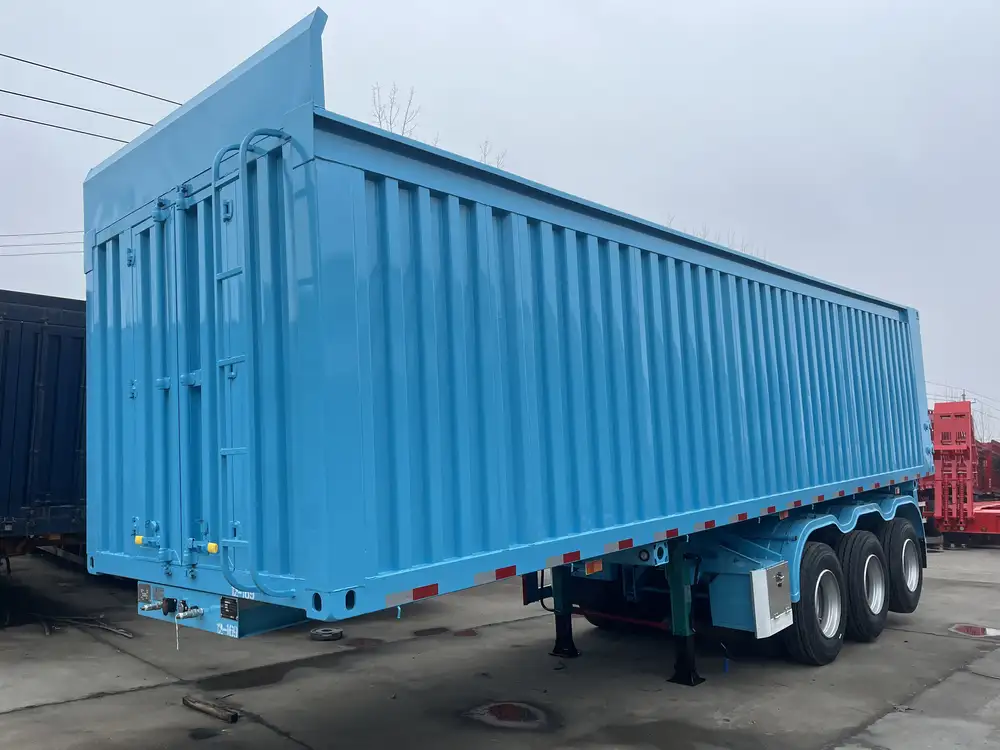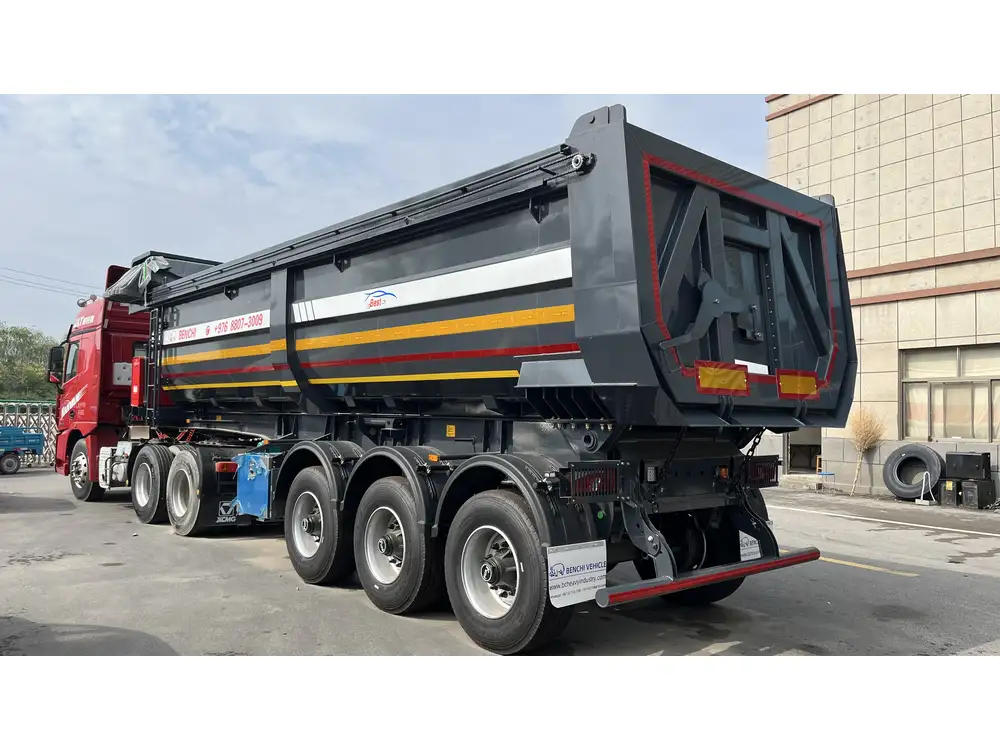When evaluating the logistics and operational capacity of a semi-truck, one common concern arises for fleet managers, truck operators, and logistics coordinators: how much does a semi weigh without the trailer? This question is not merely academic; understanding the weight of a semi-truck plays a critical role in determining load capacity, ensuring compliance with weight regulations, and optimizing fuel efficiency.
The Basics of Semi-Truck Weights
1. Definition of a Semi-Truck
A semi-truck, often referred to as a tractor or a trucking unit, is a powerful vehicle designed primarily to pull trailers. This classification, along with the unique characteristics of semi-trucks, enables them to transport large quantities of goods. The semi-truck consists of two main components: the cab (where the driver sits) and the chassis (which includes the engine and the axles).

2. Industry Standards for Weights
Understanding the weight of a semi-truck involves familiarizing ourselves with terms such as gross vehicle weight rating (GVWR) and curb weight:
- Curb Weight: This is the weight of the semi-truck without any cargo, passengers, or the trailer, essentially representing its standard, ready-to-travel weight.
- Gross Vehicle Weight Rating (GVWR): This is the maximum weight a semi-truck can safely operate, including the truck itself, cargo, and the trailer.
The curb weight of a semi-truck typically ranges from 12,000 to 25,000 pounds, depending on the model and configuration.
3. Factors Affecting Weight
Several elements contribute to the variance in the weight of a semi-truck without its trailer. Below is a detailed breakdown:
| Factor | Description |
|---|---|
| Model and Manufacturer | Different manufacturers produce trucks with varying specifications. |
| Engine Size | Larger engines add more weight. |
| Chassis Design | Heavy-duty and reinforced chassis increase overall weight. |
| Additional Equipment | Features like more powerful brakes, fuel tanks, and storage compartments increase weight. |
| Cab Design | Luxury cabs with added comfort features weigh more. |
4. The Importance of Knowing Weight
Understanding the weight of a semi-truck without a trailer is essential for several crucial reasons:
- Load Calculations: Knowing the total allowable weight influences how much cargo can be transported legally.
- Fuel Efficiency: A heavier vehicle may consume more fuel. By knowing the weight, operators can optimize routes and loads.
- Compliance with Laws: Different jurisdictions have specific laws governing weight limits. Ensuring compliance prevents fines and penalties.
- Safety: Overloading can lead to increased wear on tires and brakes, affecting safety during operation.

How to Find the Weight of Your Semi-Truck
Determining the precise weight of a semi-truck is fairly straightforward:
Commercial Scales
The most accurate way to gauge a semi-truck’s weight is to use a certified commercial scale. Many truck stops have these scales, which provide an official weight that can be critical for legal and operational standards.
Manufacturer Specifications
For more general information, operators can refer to manufacturer specifications, which often include curb weights and GVWR for various truck models. This data is invaluable when selecting a truck for specific operational needs.

Variability Based on Load
When considering how much a semi-truck weighs without its trailer, one must also recognize that the actual weight of the truck may increase based on additional equipment, fuel levels, and even potential modifications made to the vehicle post-purchase.
Comparisons of Different Semi-Truck Models
Below is a comparative analysis of some popular semi-truck models and their respective weights without trailers:
| Truck Model | Curb Weight (lbs) | GVWR (lbs) | Key Features |
|---|---|---|---|
| Freightliner Cascadia | 16,000 – 22,000 | Up to 80,000 | Advanced aerodynamics, comfort features |
| Kenworth T680 | 16,500 – 23,000 | Up to 80,000 | Excellent fuel efficiency, spacious cab |
| Volvo VNL | 16,200 – 24,000 | Up to 80,000 | Innovative design, known for durability |
| Peterbilt 579 | 16,600 – 23,500 | Up to 80,000 | Iconic styling, high-performance engines |
This table illustrates the diversity in weight across semi-truck models, providing critical insights for potential buyers and operators.
Weight Distribution and Its Impact
Understanding how weight is distributed across the axles of a semi-truck is fundamental for safety and efficiency. Achieving optimal weight distribution helps:
- Enhance Maneuverability: Distributing weight appropriately allows for safer turns and stops.
- Reduce Tire Wear: Proper distribution mitigates uneven wear on tires, extending their lifespan.
- Improve Fuel Efficiency: Efficient weight distribution allows for reduced drag and better aerodynamics.

Importance of Axle Weight Limits
Each axle on a semi-truck has a specific weight limit regulated by federal and state laws. Understanding these limits helps operators balance loads effectively to avoid penalties for overloading. For example, a common weight limit for a tandem axle is 34,000 pounds, while the gross axle weight limit is typically around 20,000 pounds for single axles.
Common Misconceptions About Semi-Truck Weights
- All Semi-Trucks Weigh the Same: This is false. Weights can vary widely based on configuration and manufacturer.
- Weight Is Not Important: Ignoring weight can lead to legal issues, increased operational costs, and safety concerns.
- Only Cargo Weight Matters: Understanding the unladen weight of the truck provides a complete picture of allowable cargo and overall compliance with weight regulations.
FAQs on Semi-Truck Weights
What is the average weight of a semi-truck without a trailer?
- Generally, the average curb weight falls between 12,000 and 25,000 pounds based on model and features.
How does weight impact fuel efficiency?
- Heavier trucks consume more fuel. Therefore, knowing the weight enables better load management and cost-saving strategies.
What happens if I exceed weight limits?
- Overweight trucks can incur hefty fines, face increased wear and tear on equipment, and pose safety risks on roads.
Is the weight of a semi-truck influenced by cargo type?
- Yes, different loads may require specific weight management practices, impacting the total allowable weight for transport.
How can I minimize the weight of my semi-truck?
- Consider lighter materials, limit excess features, and maintain a streamlined design for optimal performance.

Conclusion
In summary, knowing how much a semi weighs without the trailer is foundational for effectively managing transportation logistics, ensuring compliance with legal standards, and enhancing safety. The weight of a semi-truck is influenced by various factors ranging from manufacturer design to the equipment it carries. By understanding these intricacies, operators can optimize their fleets and achieve better operational outcomes.
Through careful evaluation of weights, adherence to regulatory standards, and strategic considerations about load management, organizations can significantly enhance their efficiency and profitability in the competitive transport industry. Whether new to trucking or a seasoned veteran, recognizing the importance of weight in trucking operations is critical for maintaining a successful fleet.



